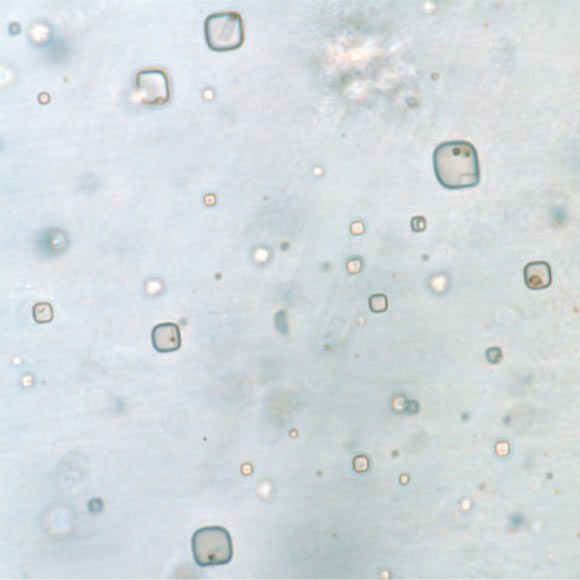The perfectly preserved mummies of ancient microorganisms, appearing as if they had just died yesterday, have been revealed in halite crystals from the Browne Formation of the Proterozoic Era in central Australia.
Scientists from West Virginia University discovered ancient cells of prokaryotic and eukaryotic organisms within the primordial fluid preserved in the ancient halite crystals.
Halite is a mineral composed of sodium chloride (NaCl), also known as rock salt. The halite used in this research was extracted from sediment cores drilled at depths of 1,481-1,521 meters.

Halite crystals containing ancient organism “mummies” – (Image: GEOLOGY)
“When halite crystals grow in saline surface waters, they trap this water within the primordial fluid. In addition to ‘trapping’ water, they can ‘trap’ anything within or near that water area,” stated Dr. Sara Schreder-Gomes, the lead author of the study, as reported by Sci-News.
Many microorganisms inadvertently fell into the “halite trap.” Using light microscopy techniques—employing ultraviolet and visible light transmitted through the crystals—scientists found microorganisms that were almost completely intact, allowing for detailed studies of the characteristics of these ancient species.
It can be said that halite crystals have acted like a completely sealed coffin, combined with the saline water contained within, transforming ancient life into some of the best-preserved mummies in the world.
Some crystals exhibited particularly high concentrations of microorganisms along with various organic compounds suspected to be of biological origin.
Moreover, this is precisely how scientists have long believed that life on Mars is preserved. According to NASA studies, Mars once harbored life billions of years ago when it was a green planet with many oceans similar to Earth.
However, harsh changes led to the extinction of life on the red planet. Consequently, NASA and the European Space Agency (ESA) continuously send exploratory devices tasked with searching for traces of life in ancient sediments. Several NASA rovers have returned evidence that, while indirect, is promising.
This discovery will serve as a crucial guide for those missions, demonstrating that halite seems to be the most suitable material if scientists wish to find an extraterrestrial “mummy.” The first step they need to take is to seek out areas that may contain halite similar to that of central Australia.
The research was recently published in the scientific journal Geology.




















































